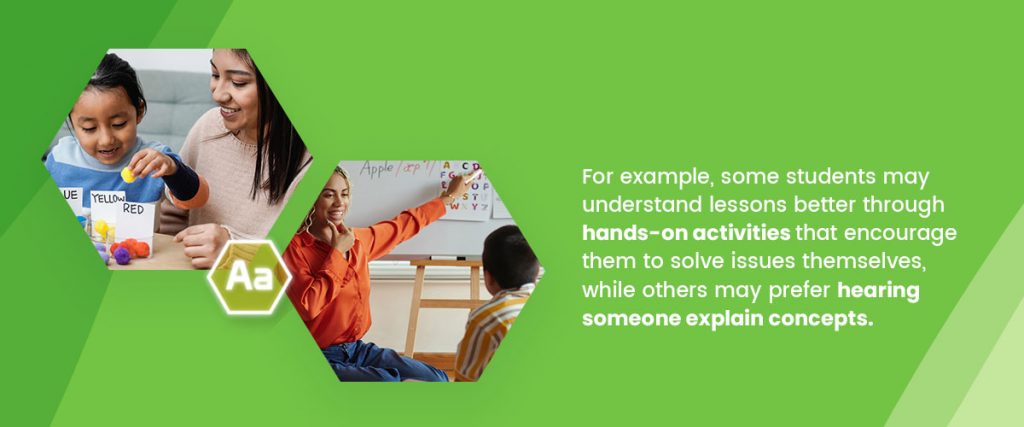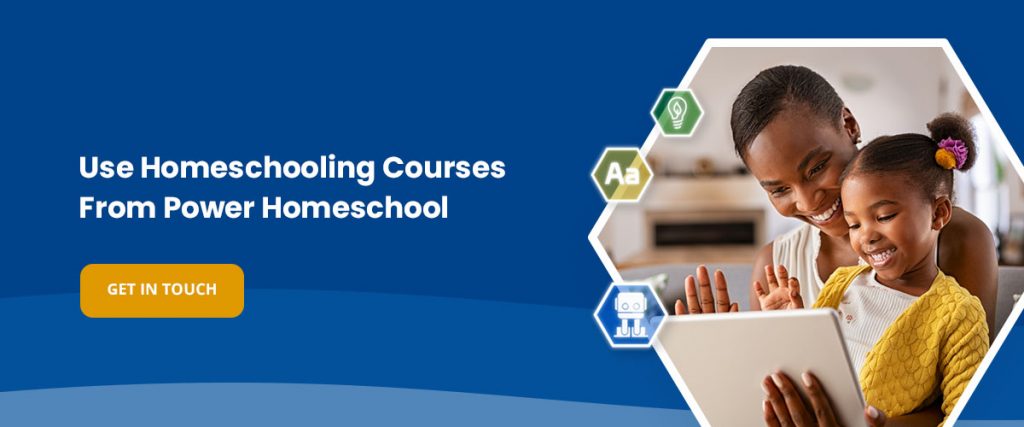One of the many benefits to homeschooling is the flexibility and freedom it provides for not only students but parents as well. As a parent, you can select your student’s schedule, classes, and pace of learning. Although this freedom probably feels liberating, you may be wondering where to start with home school. We have some tips for parents who are transitioning their children to home school from more traditional schooling methods. This guide explores how to begin homeschooling in six steps.
1. Do Your Research
Before transferring to home school, you will need to research your state’s homeschool laws as well as various methods and curriculum options. The more research you do before making the switch, the more confident you will feel in your decision to move your child from a traditional public or private school to homeschooling.
Study State Homeschooling Laws
Homeschooling laws and regulations vary by state. Some states require families to notify a government agency when they decide to take their children out of public school. Other states require parents to receive a certification while some have minimum education requirements for parents. These laws are typically available on your local government’s website. You must familiarize yourself with your state’s homeschooling laws before making any official decisions.
Research Homeschooling Curriculum and Methods
There is a long list of reasons why parents choose homeschooling for their children instead of the traditional classroom setting. Your reasoning is important because it will likely influence the homeschooling methods you implement for your student.
The amount of different methods and curriculum programs available for homeschooling continues to grow. Historically, parents would purchase textbooks and structure lessons based on these resources. However, since homeschooling has become more popular in recent years, there are many more options when it comes to homeschooling methods. These include textbooks, workbooks, or online curriculum options, which may consist of interactive course work and interesting video lessons.
Before committing to a specific homeschooling curriculum, you should investigate different providers and weigh the pros and cons of each one. Blogs, online forums, and Facebook groups are wonderful tools for getting more information about various providers as well as the perspective of parents who are currently using them, or have in the past.
Our Power Homeschool curriculum equips parents with course materials and resources for students from kindergarten through high school. The curriculum involves lessons with engaging video content and stimulating schoolwork. Power Homeschool’s online program gives parents the flexibility to decide the courses for their students and implement a schedule that works best for them.
Browse Power Homeschool Course Offerings
2. Decide on a Homeschooling Method
Once you complete enough research to make an informed decision, you will need to select a homeschooling method for you and your student. Many resources are now available online, such as course materials, videos, and digital books. The availability of resources has attributed to the increase in families moving to home school from traditional schooling options.
Before deciding on a homeschooling method, you should ask your child for their input, especially if they are coming from a conventional classroom. Depending on your student’s grade level, they may have a good understanding of how they learn best or their preferred learning techniques.
Another important thing to consider is why you are switching to home school. We have found that parents and students switch for a plethora of reasons. For example, if you are beginning home school for more flexibility, you probably want to implement a more lenient schedule and use a curriculum that allows you to do so. On the other hand, a more structured method of homeschooling may work best for students who are transitioning to home school because they need personalized help.

Luckily, most homeschooling curriculum programs allow parents to decide whether their child’s schooling is structured, laid back, or somewhere in between. When you first start homeschooling, it is important to be flexible and willing to try a new way of doing things if your original plan is not working.
3. Choose a Curriculum
Make sure the curriculum you choose supports your family’s lifestyle and needs, your preferred teaching or homeschooling method, and your child’s learning preferences. All students have their own learning style — a learning method that helps them retain information better. For example, some students may understand lessons better through hands-on activities that encourage them to solve issues themselves, while others may prefer hearing someone explain concepts.
Many different homeschool curriculums may have the resources and online tools to accommodate those preferences. These might include recorded or live video lectures, podcasts, reading material, work activities and hands-on video lessons. Try to opt for a homeschooling program that offers personalized dashboards for watching interactive video lessons and tracking progress.
4. Begin Homeschooling Your Child
If you’re wondering when to start homeschooling, it is easiest to begin in August when your child would normally start a new school year after a summer break. However, another benefit of homeschooling is that you can transition whenever you would like.
As a parent, you may need to withdraw your student from the public or private school they are currently attending and follow your state’s laws for transitioning from a traditional school to an online school. Once these necessary steps are completed, your child can begin homeschooling. Some veteran parents will recommend having a period of deschooling. During this time, your student will unlearn the practices they picked up in the classroom and become comfortable “attending” school from the comfort of your family’s home.
Before your child begins homeschooling, you should set up a homeschooling space in which your child can stay focused and productive. Make sure this space allows for easy internet connection and has storage cabinets or baskets for any necessary workbooks, textbooks, supplies and stationery. Make sure your child has a work desk and you have a comfortable space to conduct classes.
Consider putting up a blackboard or whiteboard and use an empty wall space for posting schedules, upcoming assignments and events, completed work and calendars. You can also use this space to write down your student’s monthly academic goals so they’re always aware of what they need to work toward.
If you’re setting specific homeschooling goals for your child, create a plan to meet that goal. This planning involves making a homeschooling schedule that establishes their daily routine. Doing this from the beginning can add structure to your child’s homeschool life early, helping them stay organized. Learn how to make an effective homeschool routine by incorporating class activities, field trips and extracurriculars in between normal homeschool lessons. Having an established routine helps learners manage their energy throughout the day.
5. Surround Yourself With a Support System
When transitioning to home school, a support system is essential for both the parent and the student. Having both parents fully on board before starting home school will give the student a much higher chance of being successful. Additionally, having the support of family members, such as grandparents, will make the process go much smoother.
The encouragement and reassurance from people in your inner circle are important; however, many homeschooling groups, as well as forums and Facebook groups, are incredible resources for families just beginning a homeschool curriculum. These parents experience homeschooling firsthand, so their advice is invaluable.
Power Homeschool has created a Parent Support Group on Facebook that allows parents who are new to the curriculum, and new to homeschooling in general, to communicate and get feedback from other parents. This support system will help you learn how to homeschool more effectively.
Remember that the most imperative part of getting started with home school is patience with yourself and your student. Nothing new comes without small bumps in the road. Finding what method works best for you will ensure your homeschooling experience is a success.
6. Encourage Supplemental Learning Activities
Your child may benefit from supplemental learning outside of the standard homeschooling curriculum and lessons. Incorporate engaging activities that allow them to socialize and understand topics on a deeper level, giving them the opportunity to have fun while learning. There are various activities and learning opportunities that enrich the learning experience, including:
- Field trips: Plan field trips to places like historical sites, nature reserves, aquariums or other locations relevant to your learner’s current lessons. Grounding the topics in a tangible experience is an excellent way to promote enhanced understanding. Try planning with other homeschool parents to arrange a field trip where students can discuss these topics with peers.
- Virtual tours: Your child’s homeschool curriculum may offer opportunities to experience field trips virtually. This option can come in handy when a particular place is too far or your child is unable to attend physical trips.
- Extracurricular activities: Extracurriculars involve activities and lessons learned about particular topics outside of class hours. These after-school social clubs and activities allow students to expand their knowledge while interacting with other students.
- Hands-on projects: Science projects, experiments, art projects, performances and mathematics activities are all examples of hands-on projects a curriculum may incorporate so children can gain a more immersive learning experience.
- Online classes: Online classes, in addition to written materials, may help homeschooled students add context to their learnings. These resources also offer opportunities to ask questions and gain additional clarity.
- Educational apps: Some educational apps help students understand topics through educational games and quizzes, making learning more fun.
Use Homeschooling Courses From Power Homeschool
Power Homeschool is an online homeschool program for students in kindergarten through 12th grade. We offer a variety of extracurriculars, like coding, with more options available as students grow older. We also offer self-paced learning and flexibility so that your child can work at a speed that suits them and your family’s needs. For more information about our homeschooling curriculum, browse our online homeschool courses and contact us today!



